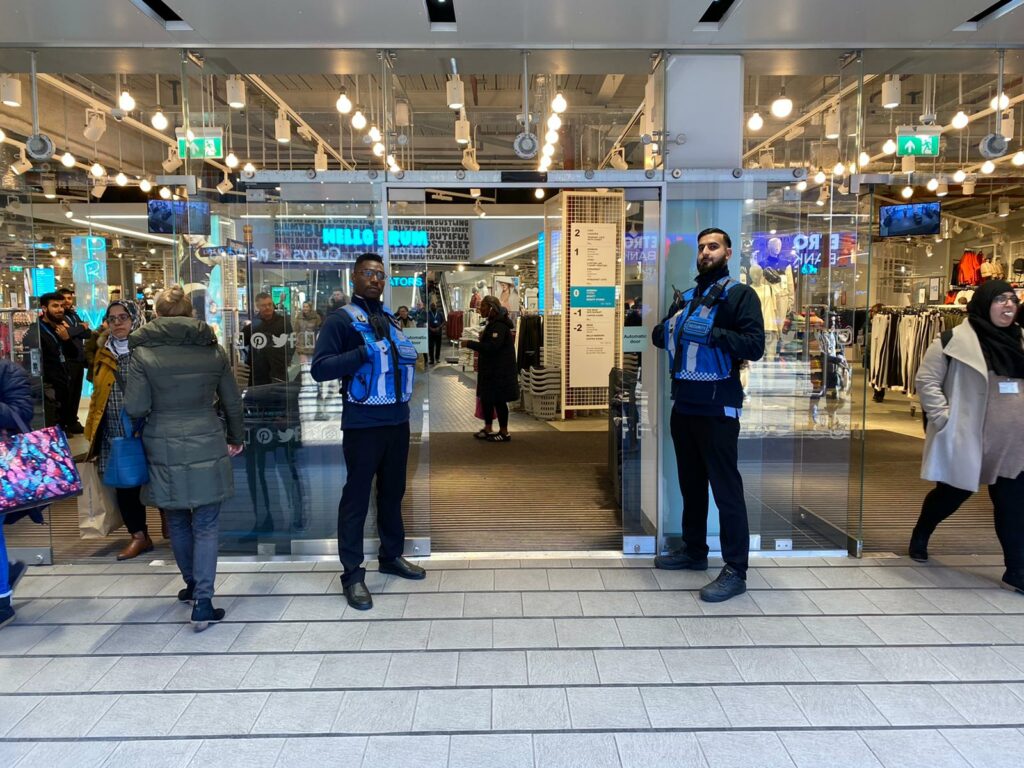In today's retail landscape, ensuring a safe shopping experience for customers is paramount. It plays a crucial role in protecting both products and patrons, fostering an environment of trust and confidence. In this guide, we'll explore the key principles of security, equipping you with the knowledge and tools necessary to safeguard your store and enhance the overall shopping experience.
Understanding the Importance of Retail Security
It encompasses a range of measures designed to deter theft, mitigate risks, and maintain order within a retail environment. From surveillance cameras and security personnel to access control systems and inventory management, these measures work together to create a safe and secure shopping experience for customers. By prioritizing security, businesses can protect their assets, reduce losses, and build trust with their clientele.
Implementing Access Control Measures
One of the fundamental principles of security is controlling access to sensitive areas within the store. This can be achieved using access control systems, such as keycard entry or biometric scanners, which restrict entry to authorized personnel only. By limiting access to areas such as stockrooms, cash registers, and employee-only zones, retailers can prevent unauthorized individuals from tampering with merchandise or engaging in criminal activity.
Utilizing Surveillance Technology
Surveillance technology is another essential component of retail security, providing a constant watchful eye over the store environment. Closed-circuit television (CCTV) cameras positioned strategically throughout the premises allow for real-time monitoring of customer activity, deterring potential thieves and providing valuable evidence in the event of an incident. Additionally, advanced analytics software can analyze customer behavior patterns, helping retailers identify suspicious activity and proactively address security threats.
Training Staff on Security Protocols
Effective security relies not only on technology but also on well-trained personnel who are equipped to respond to security incidents swiftly and appropriately. Training employees in security protocols, such as identifying shoplifters, handling cash transactions securely, and responding to emergencies, is essential for maintaining a safe shopping environment. By empowering staff with the knowledge and skills to address security concerns effectively, retailers can enhance overall security and minimize risks to both customers and employees.
Maintaining Vigilance and Adaptability
Finally, it's crucial for retailers to maintain vigilance and adaptability in the face of evolving retail security threats. Criminal tactics are constantly evolving, requiring businesses to stay one step ahead by implementing new security measures and adapting existing protocols. Regular security audits and risk assessments can help identify vulnerabilities and areas for improvement, allowing retailers to strengthen their security posture and better protect their assets.
Leveraging Technology for Enhanced Security
In today's digital age, technology plays a pivotal role in augmenting security measures. Retailers are increasingly turning to cutting-edge solutions such as RFID tagging, video analytics, and facial recognition to bolster their security infrastructure. These technologies not only provide real-time monitoring and analysis of customer behavior but also enable retailers to identify potential threats and respond swiftly to security incidents. By harnessing the power of technology, retailers can stay one step ahead of criminals and maintain a safer shopping environment for all.
Creating a Culture of Security Awareness
Effective retail security extends beyond physical measures and technology—it also requires fostering a culture of security awareness among employees and customers alike. Retailers can achieve this by providing inclusive training programs on security protocols, encouraging employees to remain vigilant and report any suspicious activity, and educating customers on how to protect themselves and their belongings while shopping. By instilling a sense of responsibility and ownership for security among all stakeholders, retailers can create a collaborative environment where everyone plays a role in maintaining safety.
Continuous Evaluation and Improvement
Finally, effective security is an ongoing process that requires continuous evaluation and improvement. Retailers should regularly assess their security protocols, identify areas for enhancement, and implement measures to address emerging threats and vulnerabilities. This may involve conducting regular security audits, soliciting feedback from employees and customers, and staying abreast of industry best practices and trends. By remaining proactive and adaptable, retailers can stay ahead of evolving security challenges and ensure that their retail environment remains a safe and secure place for all.
Conclusion
It is a multifaceted endeavor that requires careful planning, strategic implementation, and ongoing vigilance. By adhering to key principles such as access control, surveillance, staff training, and adaptability, retailers can create a safe and secure shopping environment for customers while protecting their assets and reputation. By prioritizing retail security, businesses can foster trust, deter theft, and enhance the overall shopping experience, ultimately contributing to their long-term success and sustainability.





Comments